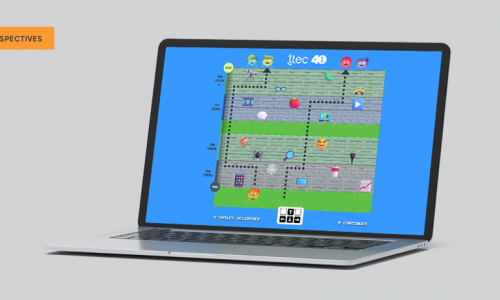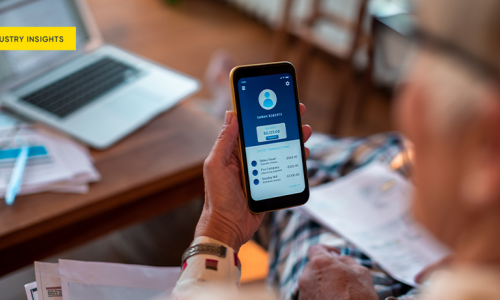Great healthcare doesn't happen by accident; it must be designed around the concept of providing the best care possible for patients. Rising costs and constricting regulations often stymie progress. Today, successfully implementing a patient-centric approach requires leadership who not only have innovative visions for their organizations, but who also have the tools, processes, and the environment in which to implement them.
When centered on innovation, healthcare providers anywhere in the world can operate successfully, exceed financial goals, and deliver patient expectations. Cancer Treatment Centers of America (CTCA) is one healthcare organization that has implemented several enterprisewide innovative practices for listening to its customers, empowering employees, and rewarding them for meeting customers' needs.
Here, Stephen Bonner, president and CEO, shares some of the strategies his organization uses for fostering innovation throughout CTCA's network of hospitals.
Customer Strategist: Cancer Treatment Centers of America has an innovative patient-centric approach to customer experience design based on listening to customers' needs. How did this strategy come about and why is this unique in the healthcare industry?
Stephen Bonner: CTCA was founded by Richard J. Stephenson after his own mother died following an unhappy, disempowering experience in healthcare. No one in healthcare was listening to her needs. And if they were, they certainly weren't responding. To fill the void, Richard created CTCA and he wired our DNA to think, "only and always about the patient."
CTCA's extensive, fundamental structures and processes focus on patient and caregiver needs, compared to the conventional approach that pushes the patient out of the decision-making process. If patients are not free to choose, all of the normal forces that drive quality up and prices down are unable to discipline the healthcare market.
CS: Your company's network of six hospitals has established a doctrine at the core of its operations called Patient Empowered Medicine. The philosophy encourages physicians, clinicians, and all CTCA stakeholders (i.e., employees) to empower patients to take an active role in their treatment. How do you continuously refine your processes and services to meet patients' needs, expectations, and preferences?
SB: We listen to our patients and constantly recalibrate ourselves to what they want from their healthcare experience. Our overarching guidance for CTCA is to pursue the "Mother Standard of Care," a simple objective to provide what you would want your own mother to have in every patient experience. We are voracious in our desire to hear from the people we serve. We never start a board meeting without having a patient tell us how we are doing; we conduct focus groups weekly with patients and caregivers in every CTCA hospital; and we conduct surveys on the patient experience in every hospital every day as well. All patient feedback is reported at the board level, including the action that was taken by our team to respond. It is amazing how much we learn by remembering that we are not the customer, and only they can really shape our business and our future.
CS: In your organization, all stakeholders—even housekeeping—are empowered to spend time with patients to build relationships with them and to listen to them during the course of their visit to ensure that CTCA is meeting their needs. Why is listening so important, and in what ways do your employees act on what they learn?
SB: One of our favorite concepts is "Wisdom Medicine," a holistic and embracing model that acknowledges that cancer is so much more than a tumor. Cancer affects the entire life of the patient and also of their families and friends. Wisdom Medicine begins with listening. Listen to what the patient is telling you, as no one knows better than the patient about what they desire. Then act. There are so many amazing examples of CTCA stakeholders (what we call our employees) going above and beyond for our patients. This can be as simple as always remembering the extra blanket a patient prefers when getting their chemotherapy, or as extravagant as one of our stakeholders taking a blind patient who loved baseball but had never been to a game before, to a Philadelphia Phillies game and giving him the verbal play-by-play.
We call each interaction with patients a "moment of truth." A moment to show them we don't just talk the talk, but truly care about them and offer them hope.
CS: Does your culture of innovation come from the top down and if so, why is that important to the success of building a patient-centric environment?
SB: At CTCA innovation comes from everywhere—bottom up, top down, inside out, and outside in. We recently launched an "Ideas Marketplace," an online tool where any CTCA stakeholder can submit an idea they think will improve the patient experience, directly or indirectly. Submitted ideas are vetted by an innovation committee and resources are allocated to support stakeholders to act on their proposals.
We also have an annual strategy review meeting with our executives where we identify three to five key strategic objectives for employees to pursue. These objectives are then communicated to the enterprise, equipped with cross-functional teams, timelines, and resources. One key to success in innovation is having the ability to know that innovation can come from anywhere in the company. And we empower individuals to make it happen with a lot of authority and accountability. This will move the culture forward most effectively and create a great place to work.
CS: In addition to training, it's also important to ensure that employees are aligned with corporate in delivering on the brand promise. Each of your hospitals hosts a 15-minute daily alignment meeting that reinforces the mission and values of the organization. How does this help all stakeholders in CTCA gain inspiration and to provide continuous value for patients?
SB: This daily interaction promotes a transparent culture and builds relationships as we share success stories, updates, and take a few moments to focus ourselves on our mission to serve cancer patients. It lets us review mission, vision, and values each day with every stakeholder. Our team does amazing work every day, and it's important to take the time to recognize our wins and celebrate them…quickly.
In addition to cultural alignment to the mission, CTCA also believes that efficiency measures should be tied to every process. Stakeholders from every department are offered the opportunity to attend Six Sigma classes and earn a green belt or black belt. They're then encouraged to adopt or launch a project or process in CTCA that supports CTCA's mission.
CS: Can you explain the genesis of that idea and how the program has helped spawn innovations within CTCA?
SB: We know there is enormous waste in healthcare, and at CTCA we recognized that very early on. There were huge opportunities to increase efficiencies in our own system, but to try and implement that in a top-down strategy would never work. We knew that our stakeholders could better identify the opportunities to decrease waste, and we wanted to empower them to take on these initiatives themselves. So we implemented a Center for Learning, and encourage all stakeholders to attend Lean Six Sigma courses. These facilitated classes teach how to identify, measure, and eliminate waste from our system.
Since implementation, more than 1,900 CTCA stakeholders have been trained.That's nearly one of every two stakeholders. In the last year alone, 282 Lean projects were completed, 152,948 hours of patient wait time was eliminated, and more than $76 million of total revenue impact was realized. That is $76 million we can reinvest in patient care and innovation, and an infinitely wiser use of our scarce resources.
CS: CTCA's Net Promoter Scores of 95 or above are proof that the innovation model works; a score of 80 is considered to be world class. To what do you attribute your world-class score?
SB: It's our people and our continuous tuning of the culture to support them, all in the spirit of the Mother Standard of Care. CTCA has a very particular talent acquisition process for all levels of the organization. In fact, when we opened our most recent facility in Georgia we screened more than 20,000 applications for only 180 positions. Further, when we open a new center at least one-third of the team has to come from existing CTCA facilities to infuse our patient-centric culture. Talent will always be a key to success in a customer service organization.
CS: How do you plan to evolve the customer-focused strategies that are in place and to continue to foster innovations at CTCA?
SB: The patients will guide us and tell us what they value in their healthcare experience, and we will evolve to their demands. In fact, we are currently sponsoring a project through the National Patient Advocate Foundation (NPAF) to conduct seminal consumer research to create an index of what patients truly value in their oncology experiences. The ultimate goal is for all oncology providers to populate this index with their data, and once they do, consumers will have the JD Power of oncology care where they can go to compare providers when selecting where to treat. Actually, we are looking for partners who are interested in this research to join us and encourage anyone interested to reach out to us or the NPAF for more information.






